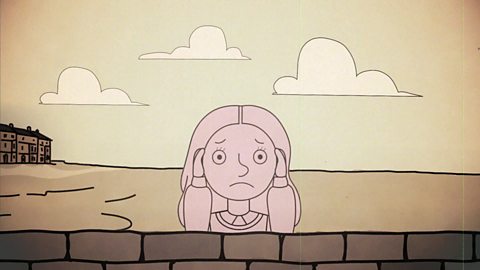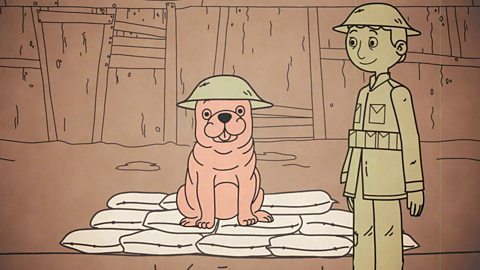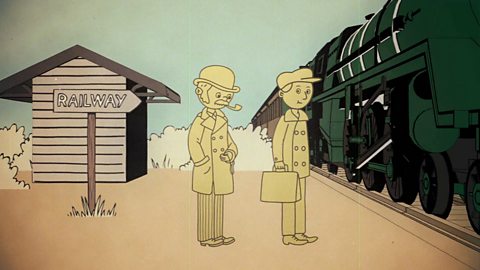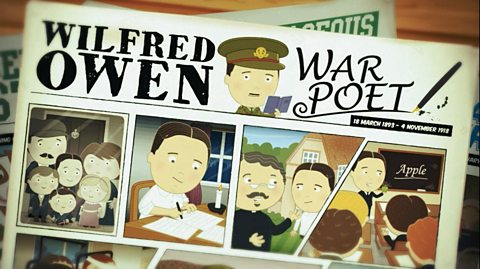DRUMS PLAYING
I don't mind the rainy weather. I quite like playing in the mud, but I'd probably feel different if I was a soldier in the trenches during World War I.
Mud? Ah, we know all about mud here on the Western Front. We're living in it. We've dug hundreds and hundreds of miles of these trenches. They're full of water in the winter, full of flies in the summer, and full of rats all year round. But they're very important. These trenches are the only thing stopping the enemy advance, and, when we're posted here, they become our home.
It's like an entire town here. We have operations dugouts to plan attacks, observation points to spy on enemy movements, and, if you're injured, you can be treated at the medical post. And we get lunch from a cooking shelter. It's supposed to be meat and vegetable stew, but my mate reckons we should fill the sandbags with it.
After repairing and cleaning the trenches, in the afternoon, we get the chance to grab some sleep or to read letters from home. Reading them makes me feel happy and sad all at once, but we can't rest for long. Soon it's back to the firing trench, because most attacks start at the end of the day, and we must be ready and alert.
I can see the enemy from here. Imagine the length of a football pitch. That's how close they are sometimes. We watch each other as the sun goes down, and all through the night, and we think of home. Our real home.
GUNSHOTS
I can get out of the mud and the rain any time I want, but those soldiers couldn't, and lots of them never did get the chance to go home.
No one likes to get stuck in the mud but imagine living every minute of every day in it.
In World War One, hundreds of miles of muddy trenches became the home to thousands of soldiers.
These long narrow ditches dug into the ground were as busy as a small town where soldiers lived all day and night.
These trenches helped stop the advance of the German army.
We can all get out of the mud and wet when we want to, but many soldiers during World War One couldn’t and didn’t get the chance to go home.
Teacher Notes
You could start by asking pupils how they would describe a typical day for children nowadays.
Pupils could write a timetable for their day then research and compare a daily schedule for a soldier living in the trenches.
Pupils could research or make a model or diorama of the trenches.
The class could use the school grounds to measure out how far the allied and enemy trenches were apart.
Pupils could design and make a periscope, similar to the ones used in the trenches to watch out for the enemy in No Man’s Land.
This could be taught alongside science lessons on light.
Pupils could research and read letters and diary extracts from soldiers in the trenches. They could try to put themselves in their position and write their own as if they were soldiers fighting on the front line.
Curriculum Notes
This animation is suitable for teaching History at Key Stage 2 in England, Wales and Northern Ireland, and at 2nd Level in Scotland.

Attacks by the sea. video
An animation about an attack that targeted key parts of the British coastline and the impact it had on one town.

Animals during World War One. video
Animals were key to the success of World War One and this article explains why.

Methods of transport. video
This animation looks at why the various methods of transport were important and how they were used during World War One.

Wilfred Owen's poems. video
Explore the work of Wilfred Owen as a poet and why his writing is important in reflecting on World War One.

Edith Cavell. video
Find out about the life of Edith Cavell and how her bravery makes her a World War One hero.
